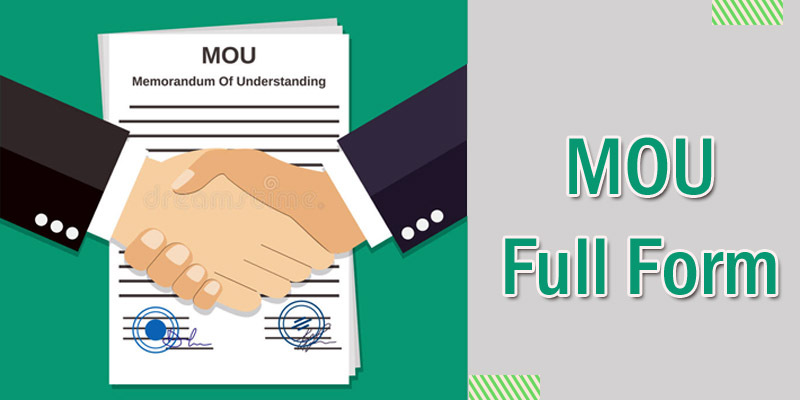MOU is an abbreviation for “Memorandum of Understanding.”It is a formal agreement between two or more parties that represents mutual consent on an issue. This type of document does not imply a legal commitment on the part of the parties, but it contains all the important details and has a high degree of mutual respect and seriousness. It can be considered as the first step towards a legal contract and serves as a basis for making a formal contract later on.
MOU Full-Form | Memorandum of Understanding
In the US, an MOU is called a Letter of Intent (LOI). It is widely used in international agreements as it can be created and ratified in a short time frame. It is also used to modify existing legal deals.
Many companies and government agencies use MOUs to indicate a relationship between departments, agencies, or closely held companies.
A comprehensive MOU should set a clear roadmap for its parties on how to move from the intention stage to the contract stage. It should address the following points:
- The identities of the parties involved
- Definition of the project
- Duration of the project
- Each party’s responsibilities and contributions to the project
- Funding for the project
- Detailed terms and conditions before proceeding to the contract stage
- Division of share capital between parties
MOU in Private Companies
The MOU acts as the first milestone towards the realisation of a project with the input of different parties. It is used at the intention stage of the project.
If any company considers launching a new project or service by inviting new ventures for the same, it will incorporate a new company held jointly by implying an MOU between the companies, commonly known as a joint venture agreement, which occurs during the contract stage. Below listed are the components of the MOU:
- Each party appoints a certain number of board members.
- Explicit signatures with dates
MOU in government and public affairs
An MOU can be used between a government agency and national or multinational agencies. India is witnessing numerous MOUs signed with other countries for socio-economic, infrastructural, industrial, agricultural, medical, and technological developments.
Difference between MOA and MOU
- MOU- This is the first step of mutual understanding between parties to exercise any activity together.
- MOA – It is a conditional agreement written between parties to work together on an agreed project.
Advantages of MOU:
- It is simple and direct and doesn’t involve the terms and conditions as laid down in a legally binding contract. Due to the informal yet serious nature of MOUs, sincere attention is devoted to framing an effective MOU to arrive at an agreement.
- If one business intends to collaborate with another business, the parties may wish to first analyze their extent of convergence before spending significant amounts of time and legal fees on preparing a more detailed binding agreement.
- MOUs are usually less time-consuming and avoid the legal implications involved in a contract.
Conclusion:
A memorandum of understanding (MOU) is a written agreement between two or more parties that can be bilateral (two) or multilateral (three) (more than two parties). To prepare a complete and effective document (MOU), the parties involved must first reach an agreement that is acceptable to each party and have clear information on each of those parties’ important stances.
Although a formal document, the MOU is not legally binding and merely expresses each party’s willingness to take action to move the contract forward.

